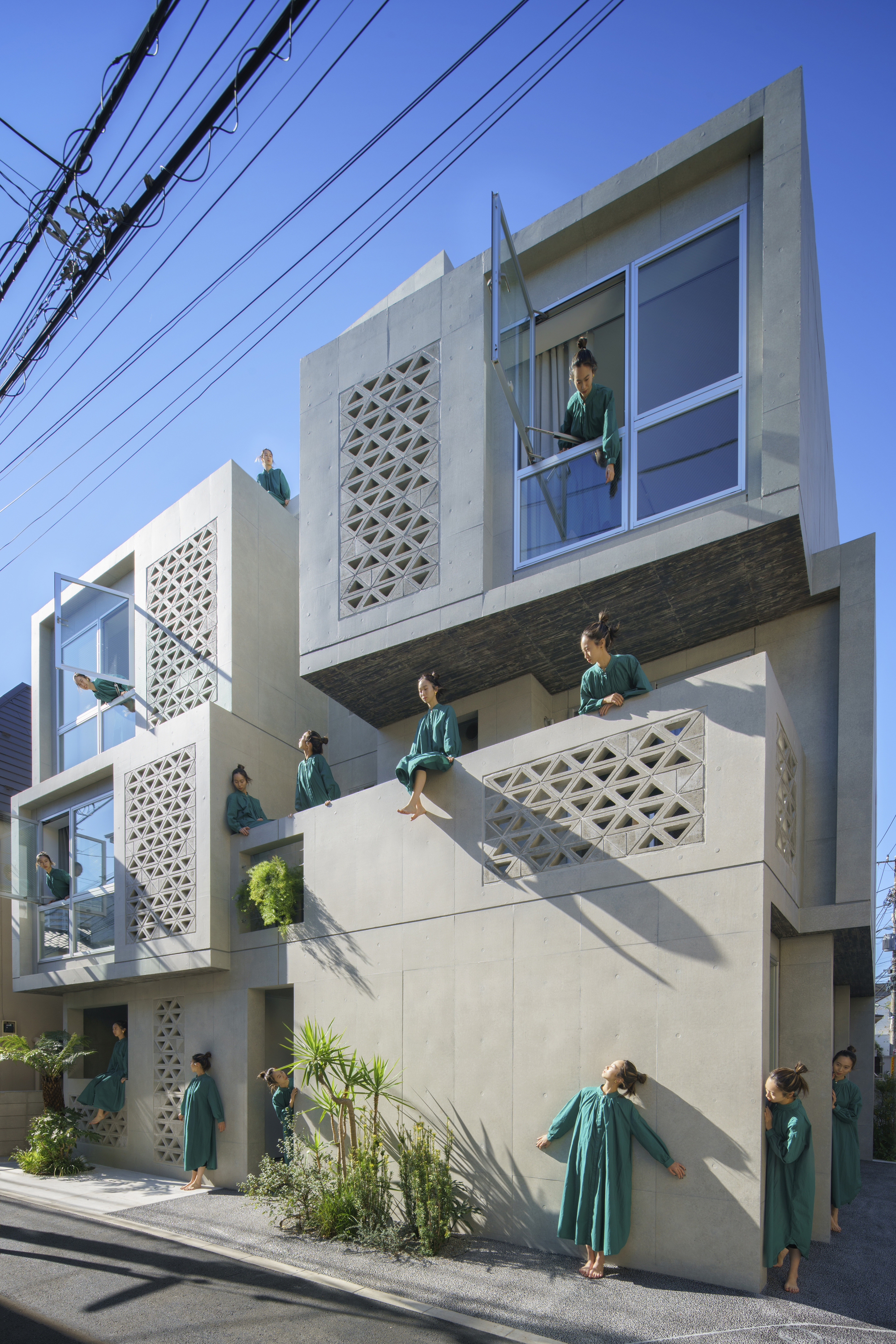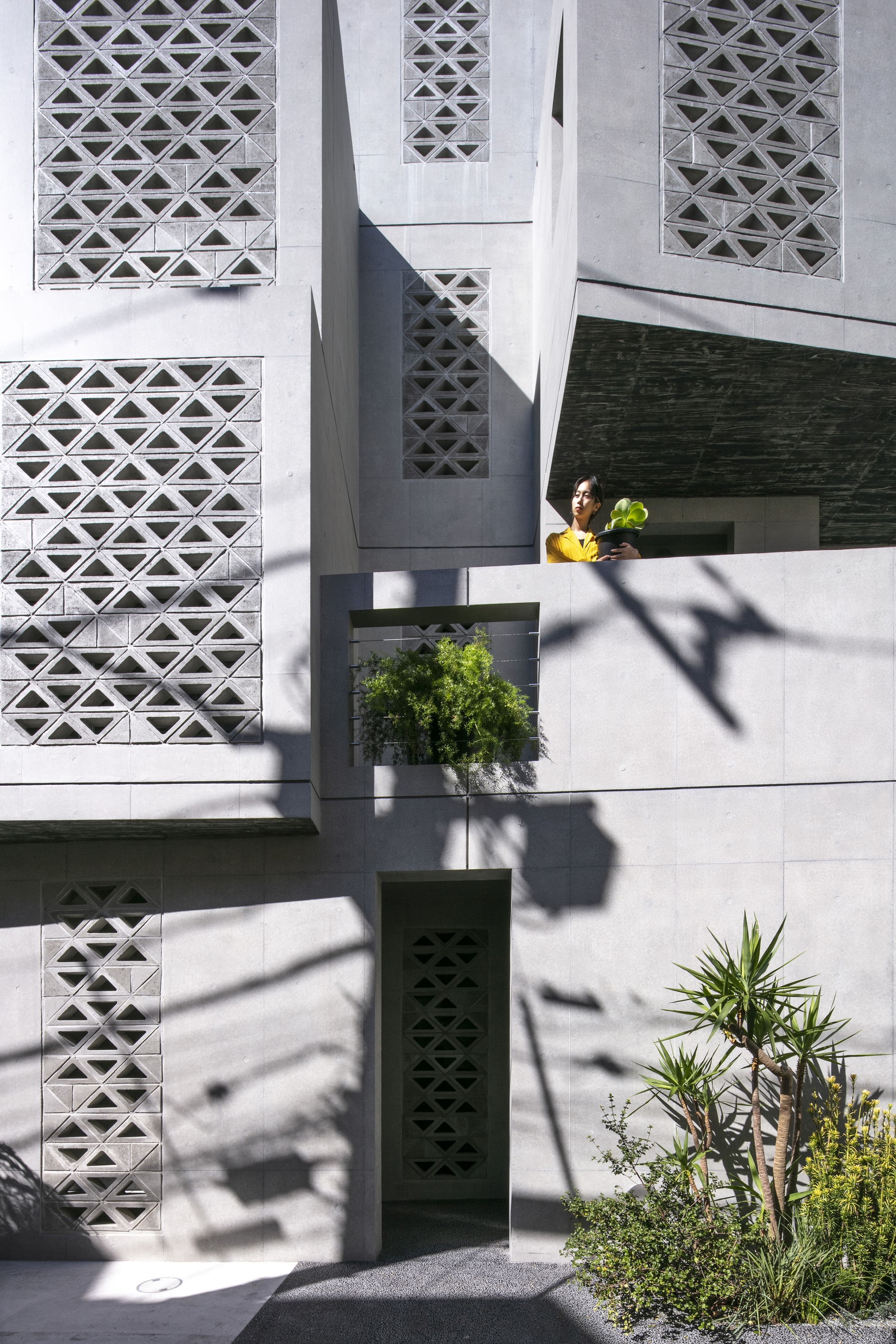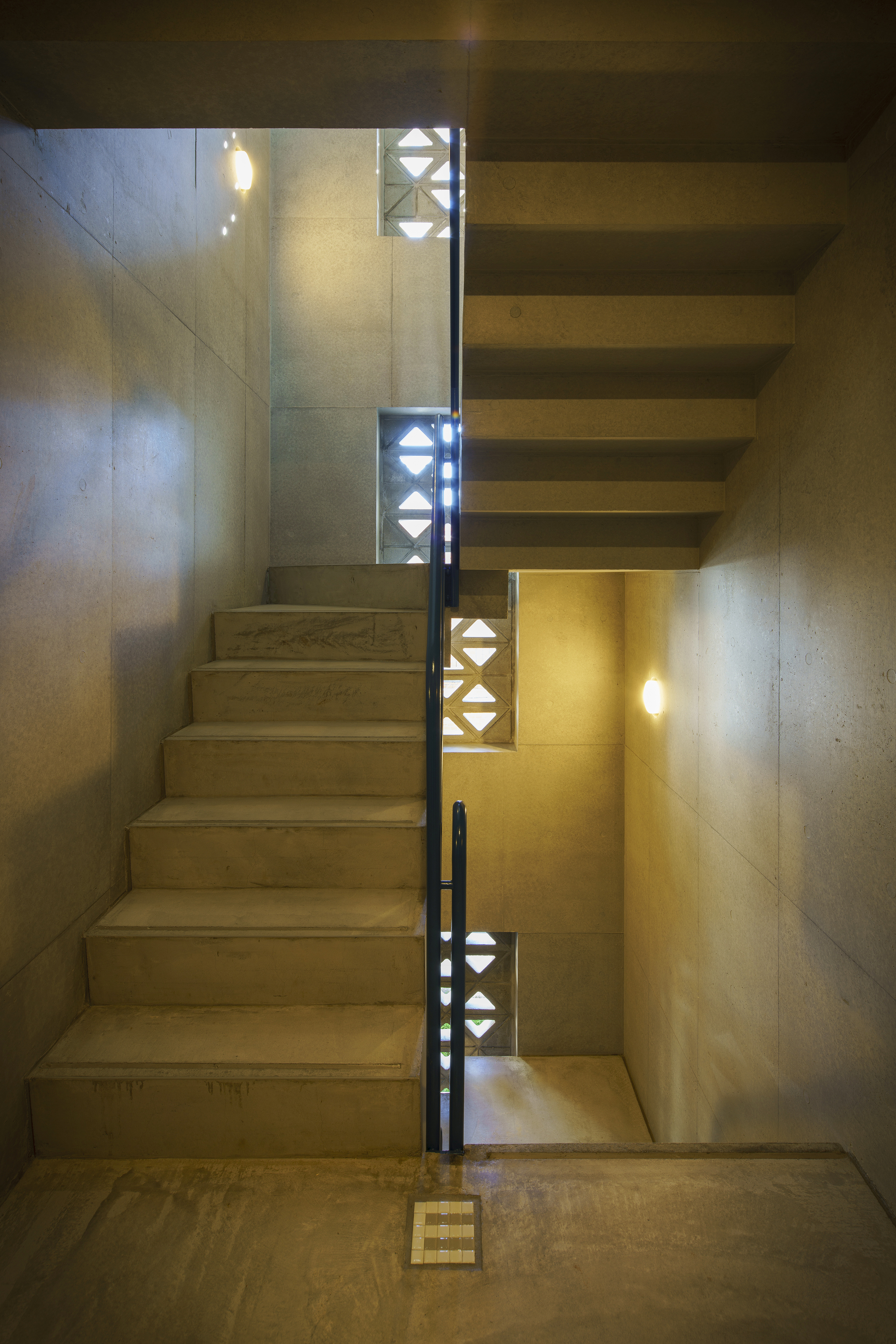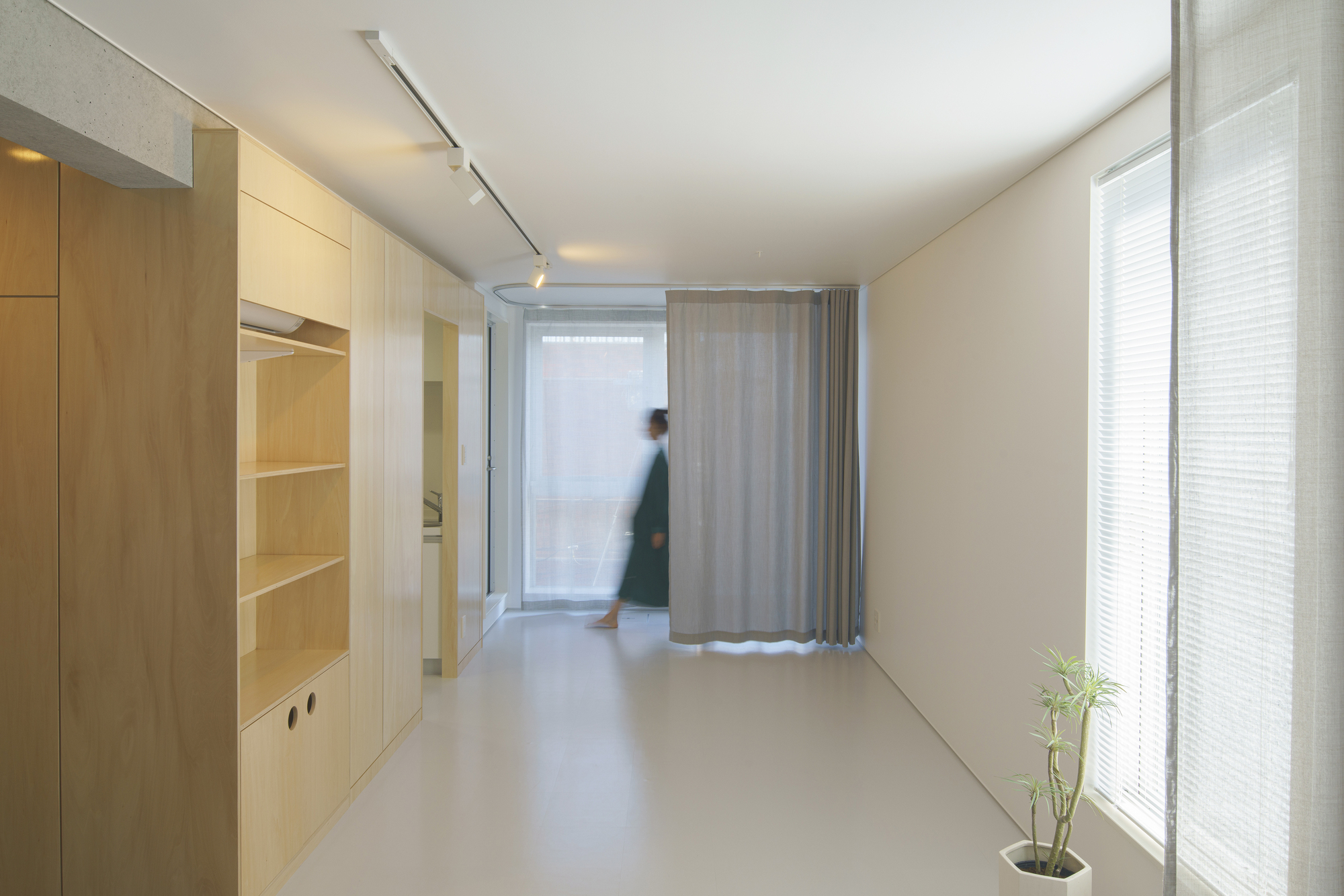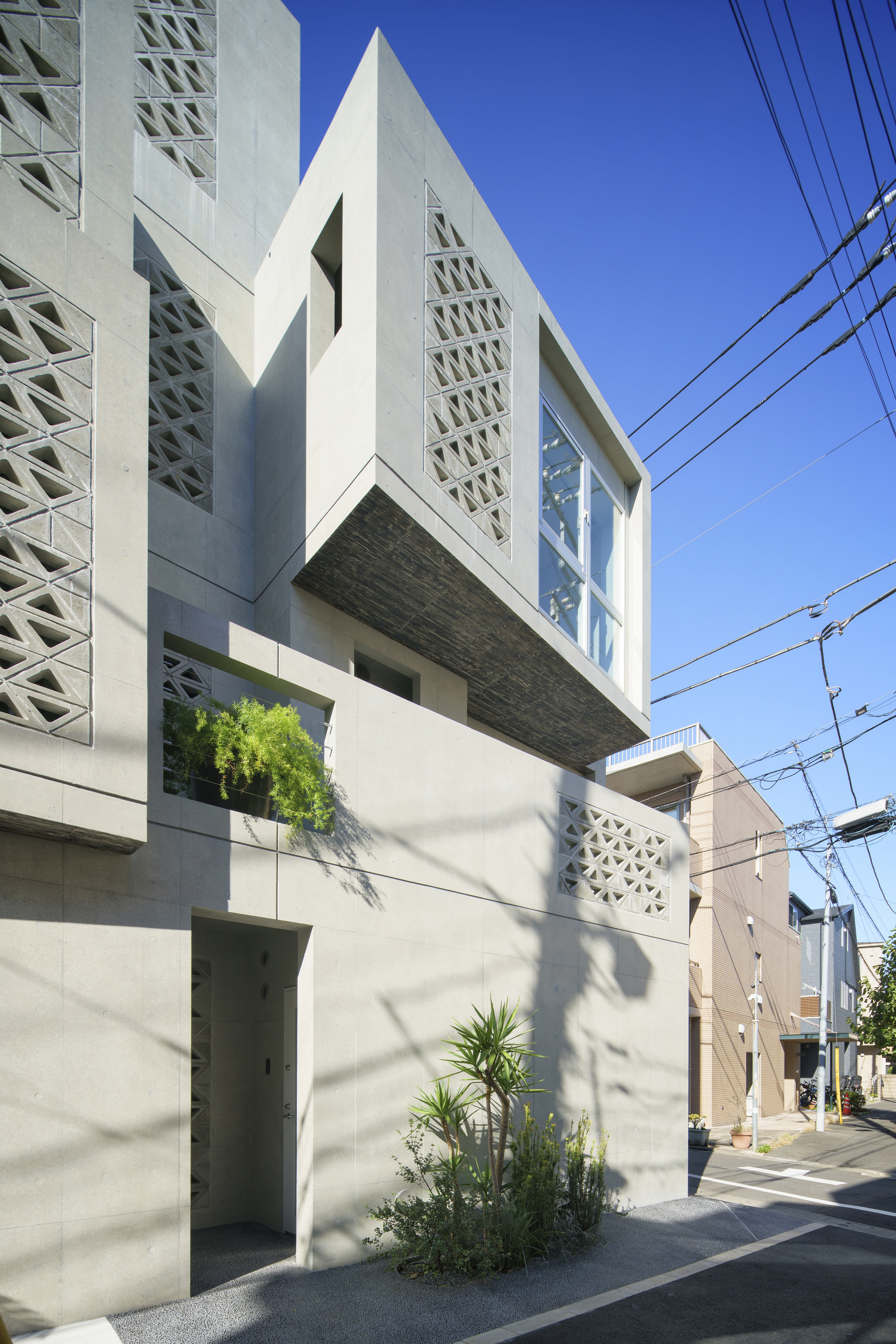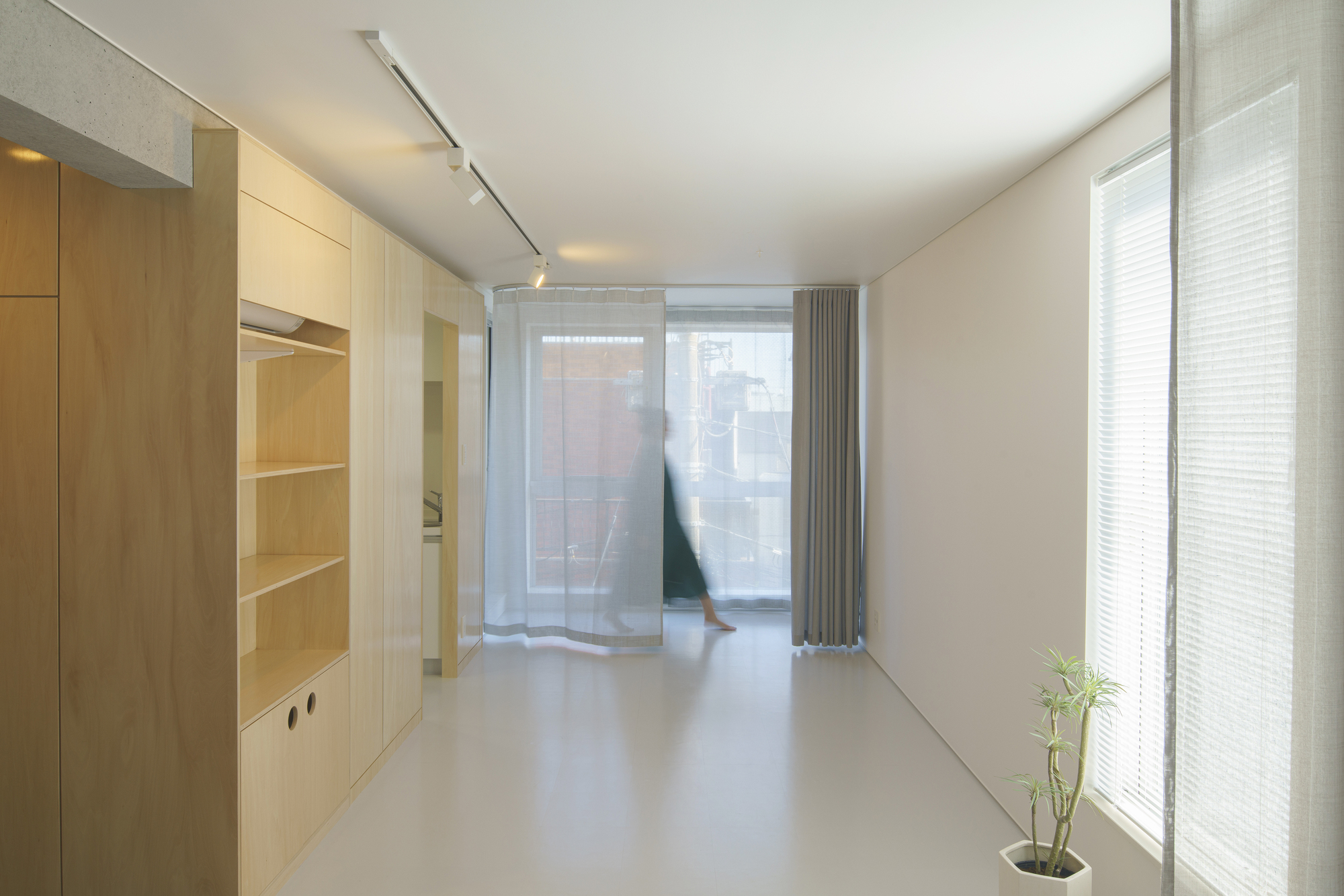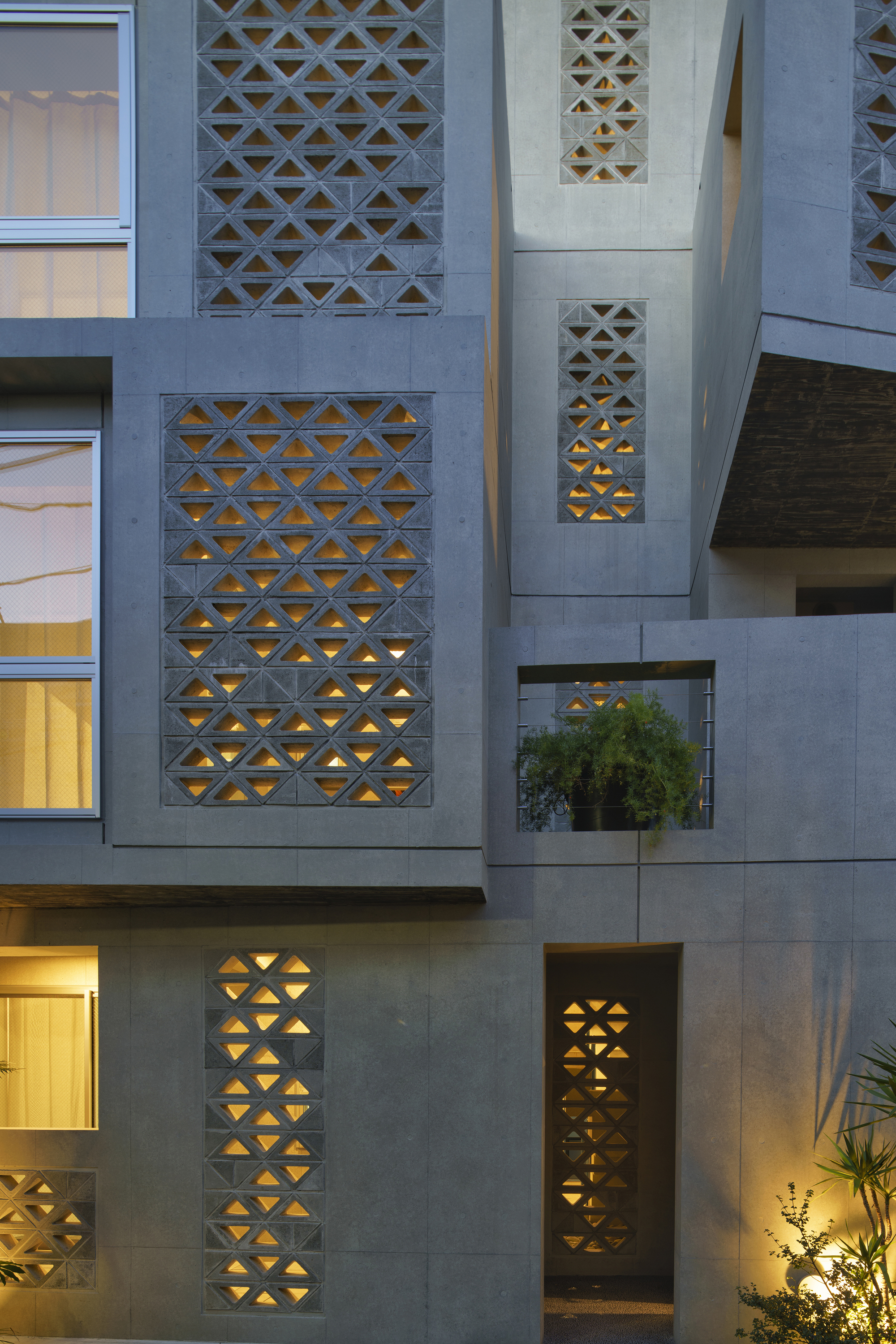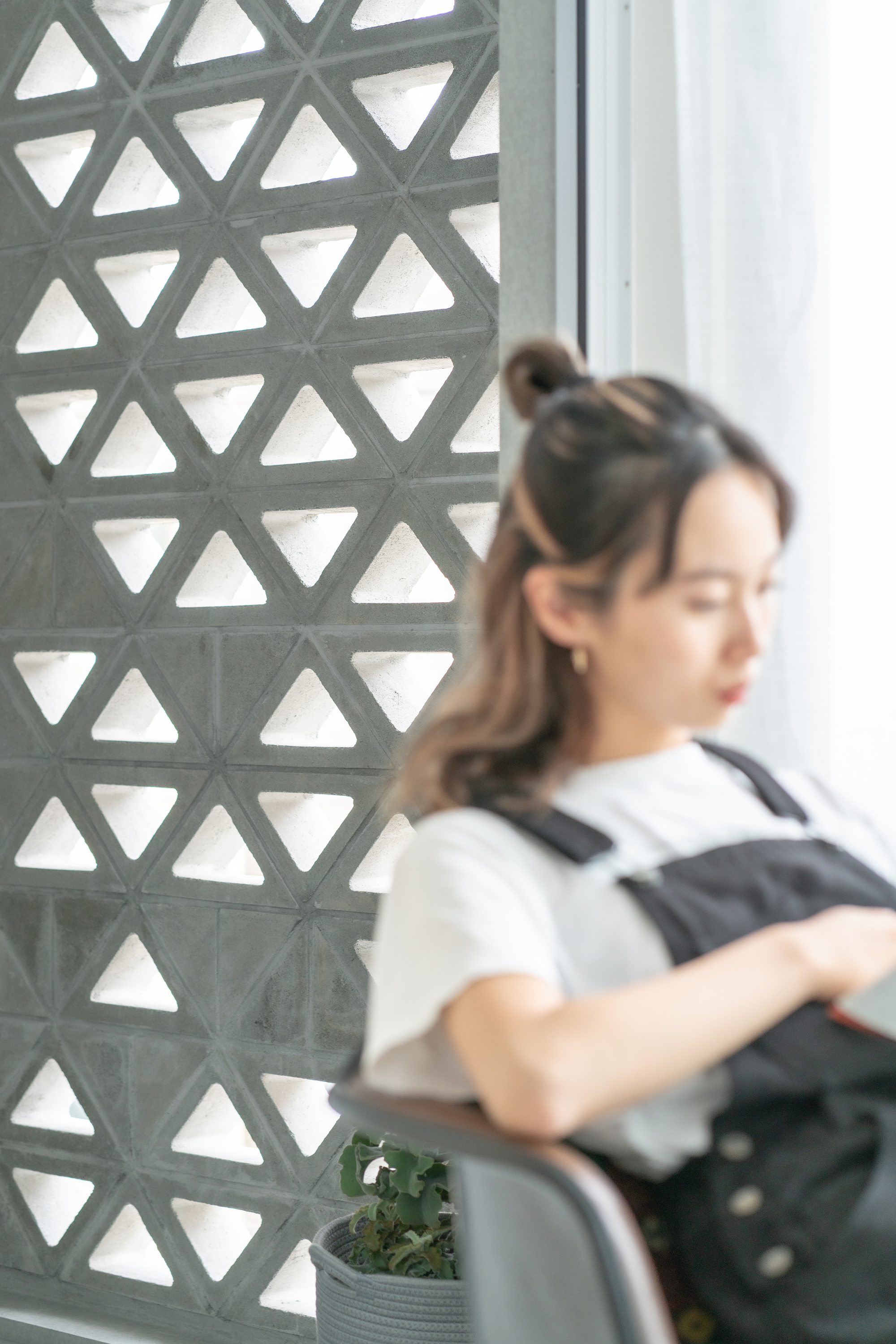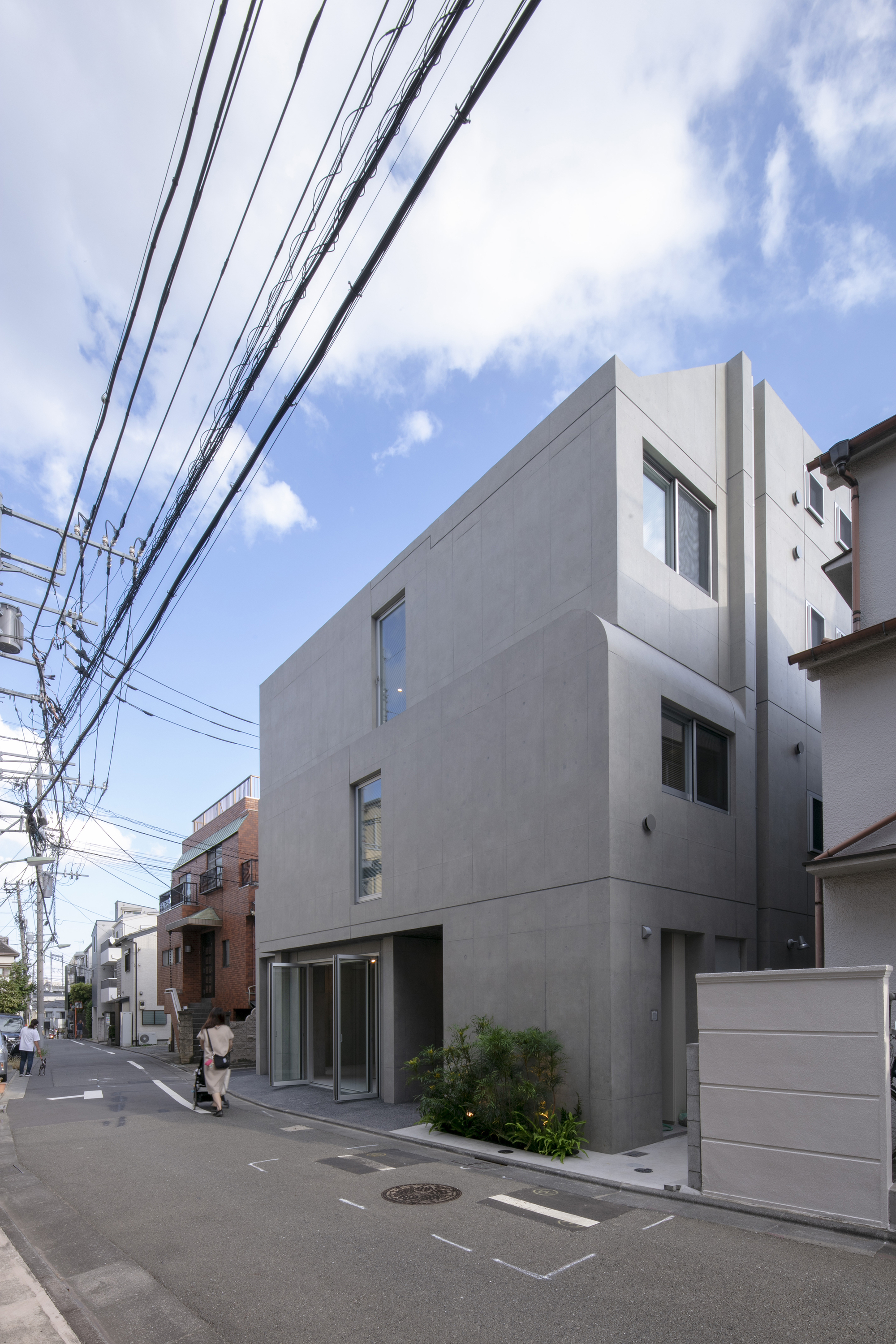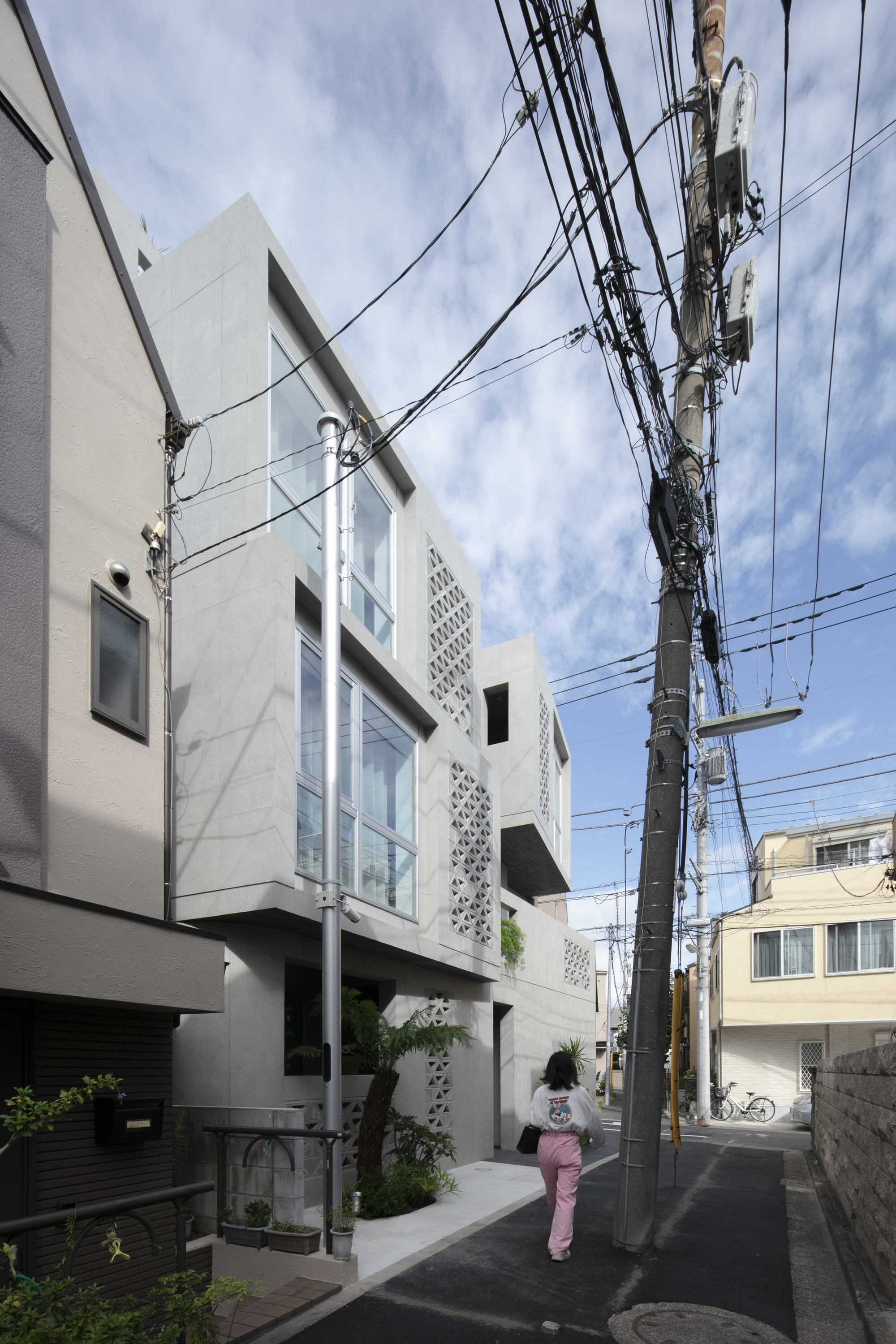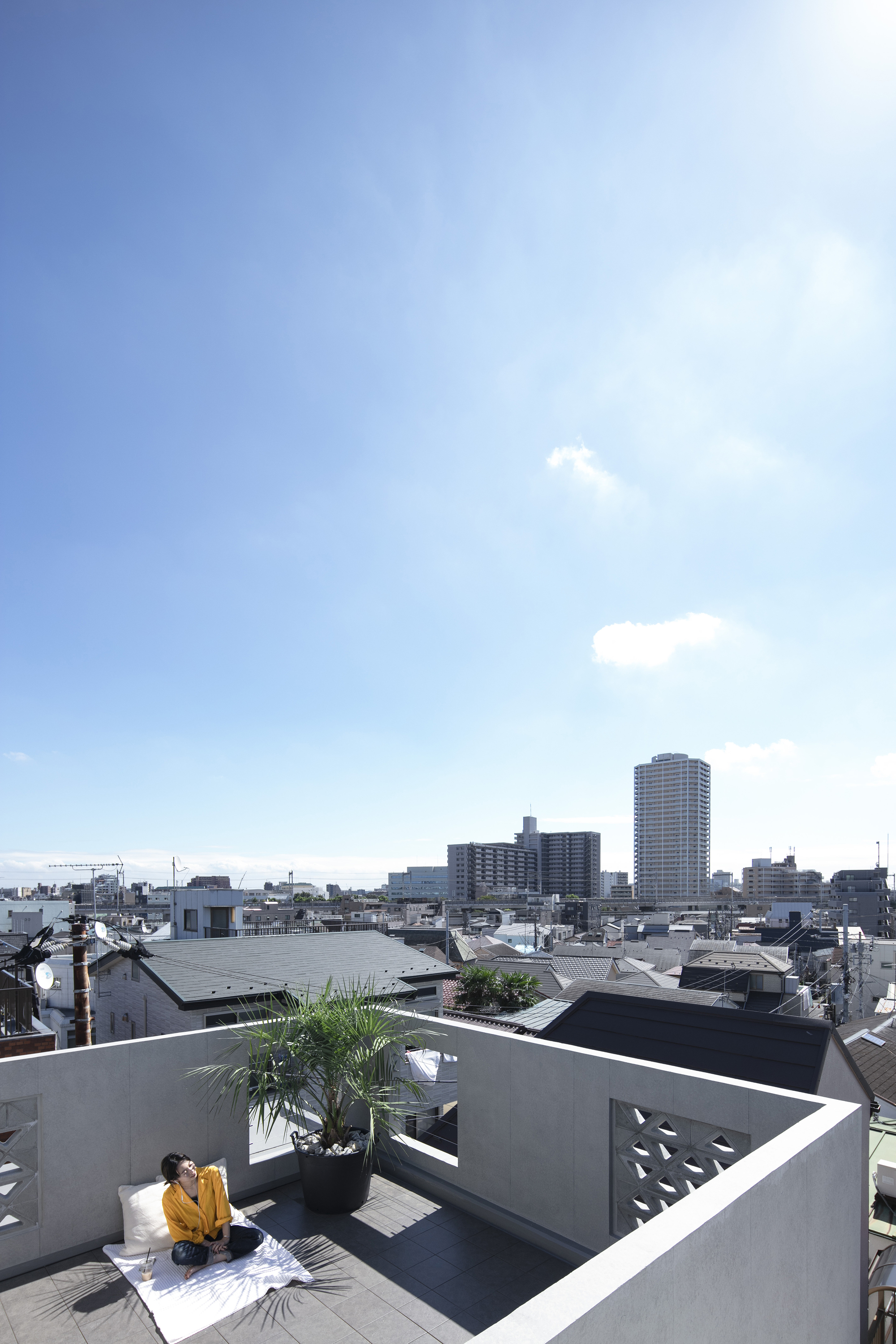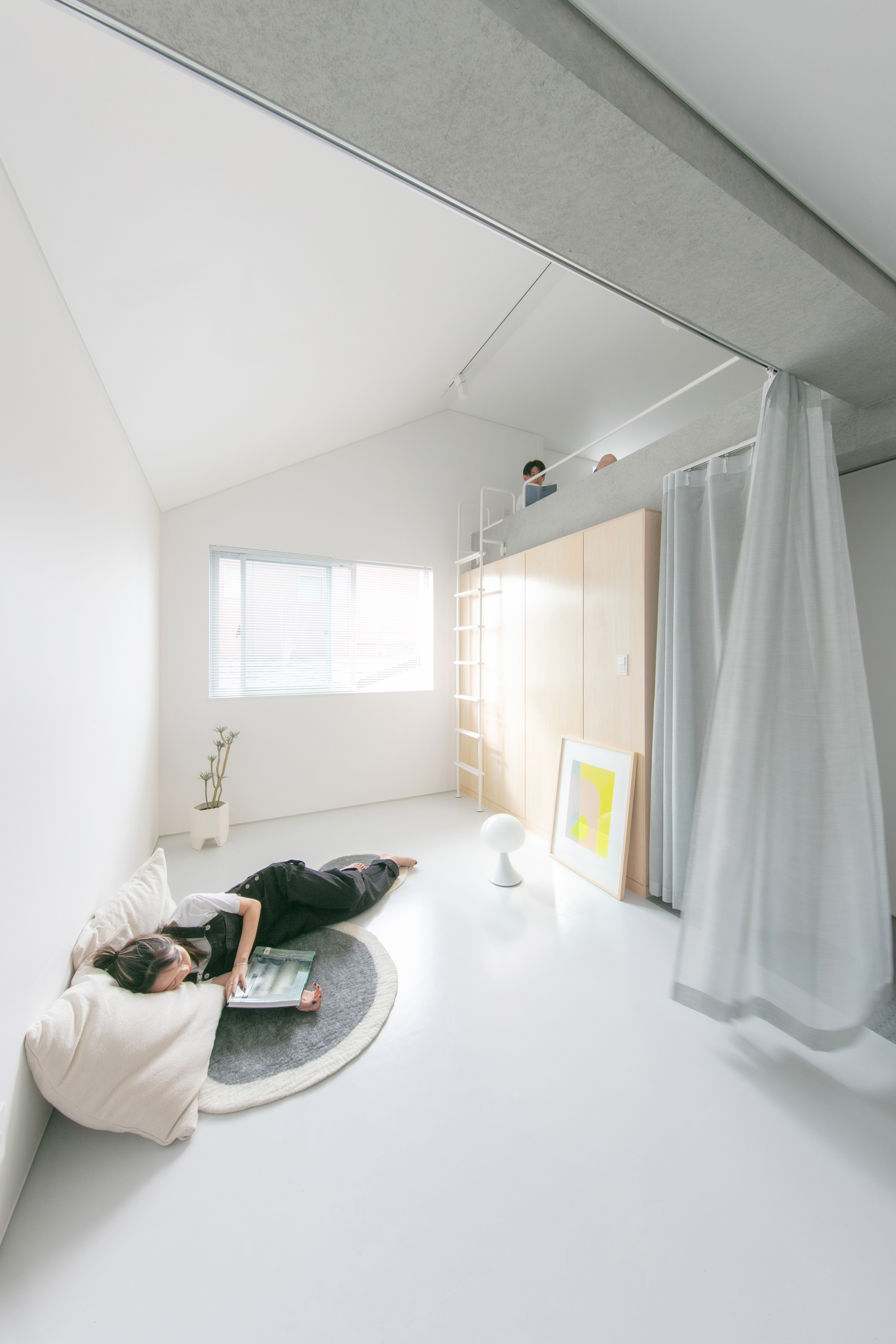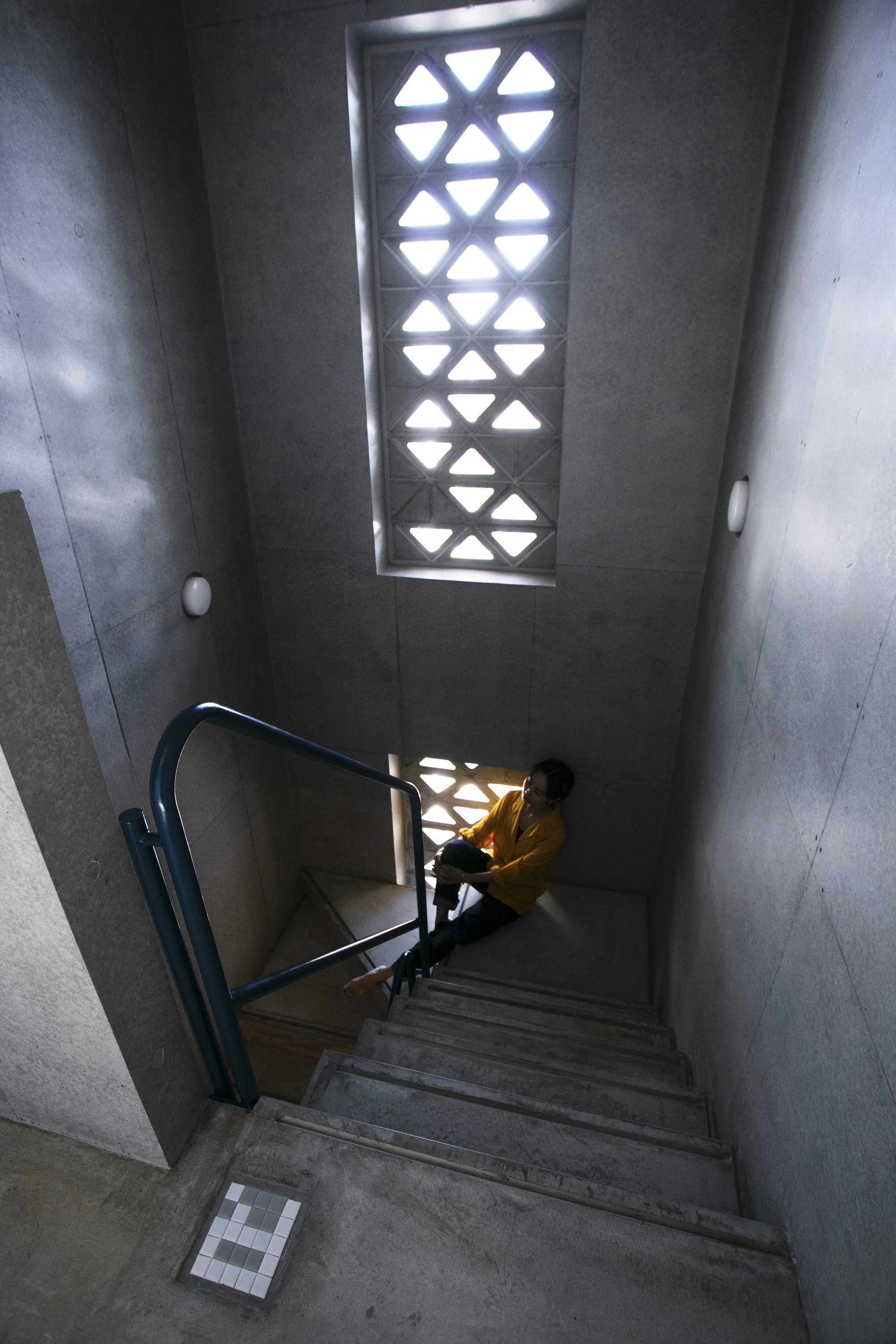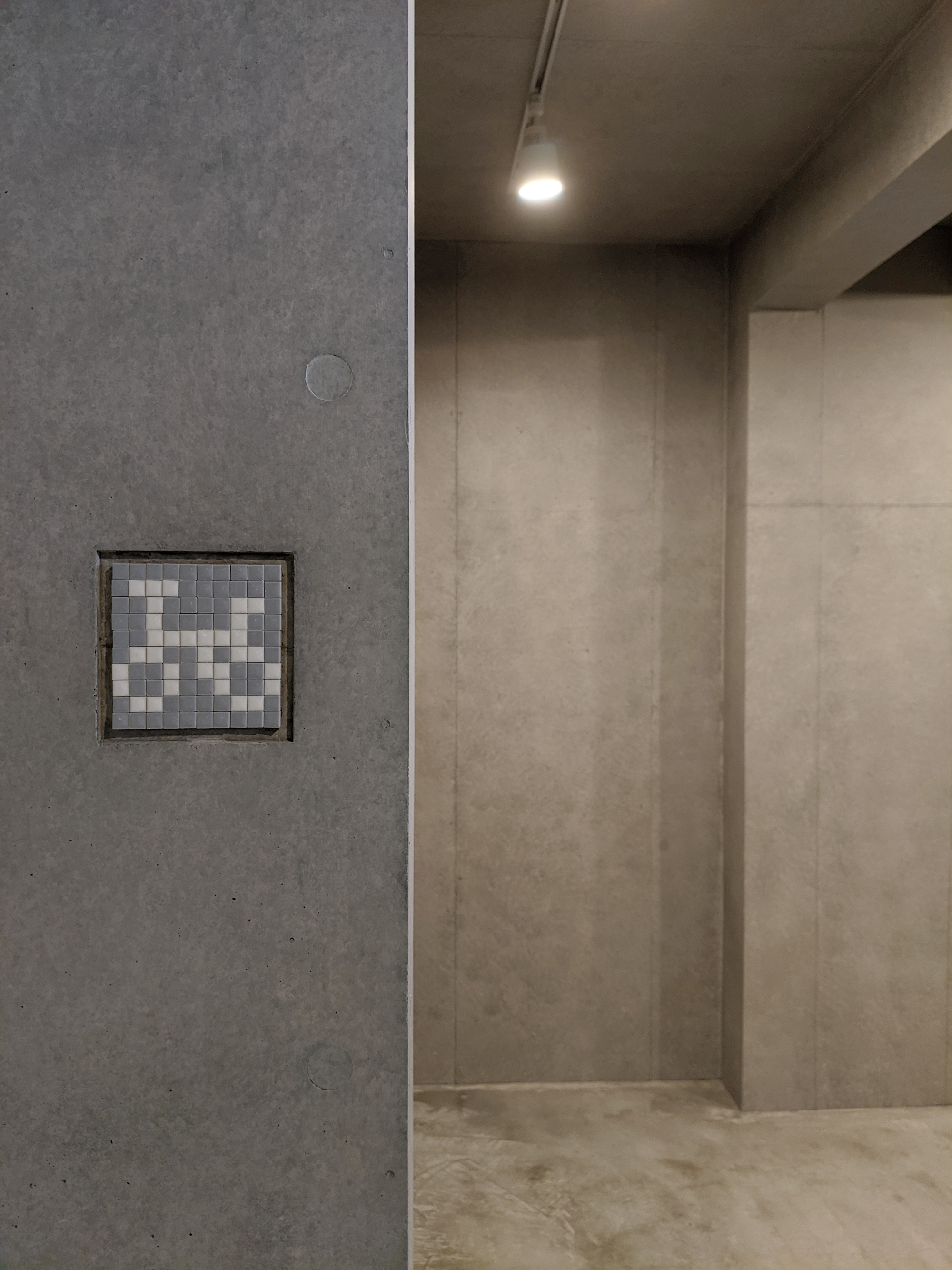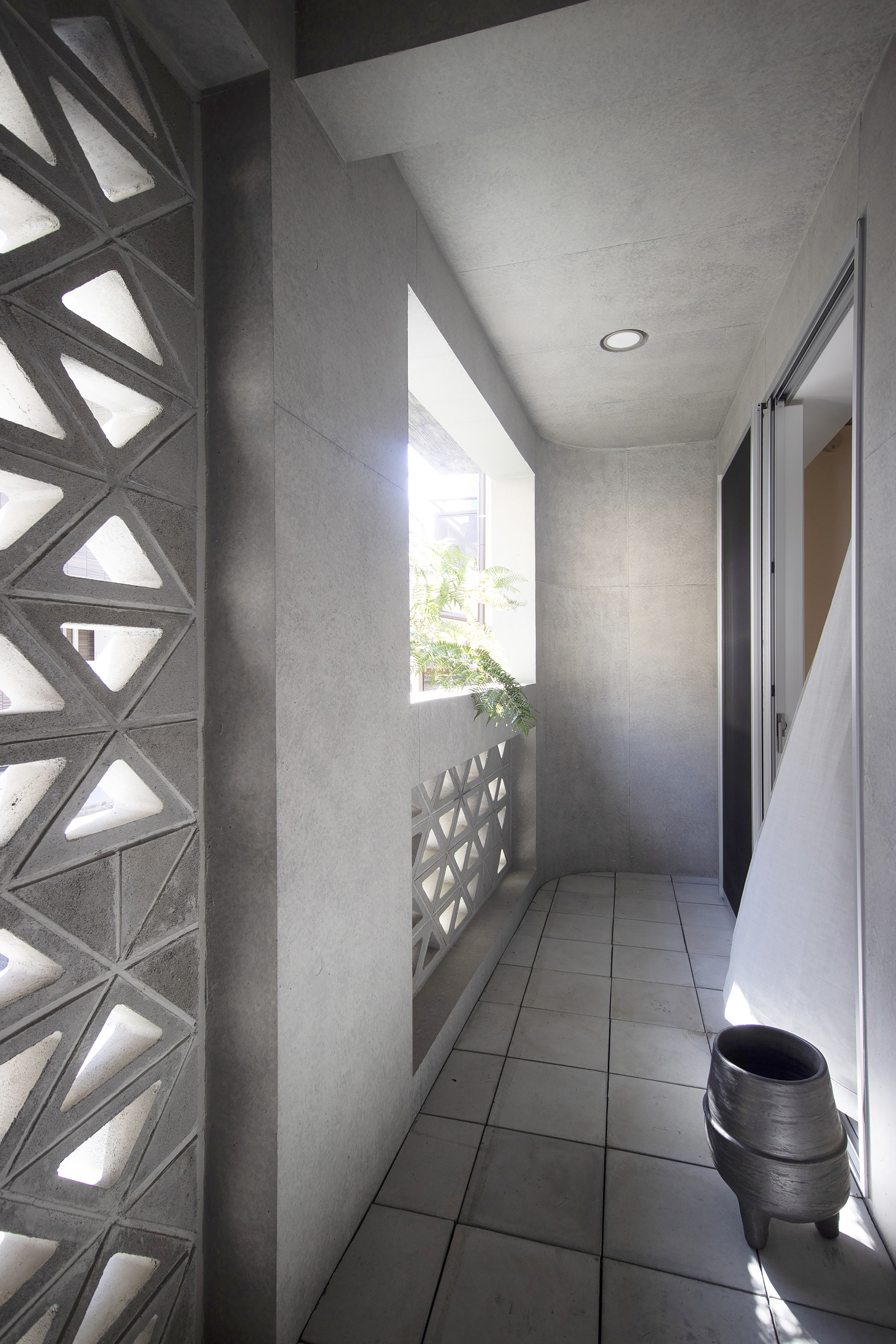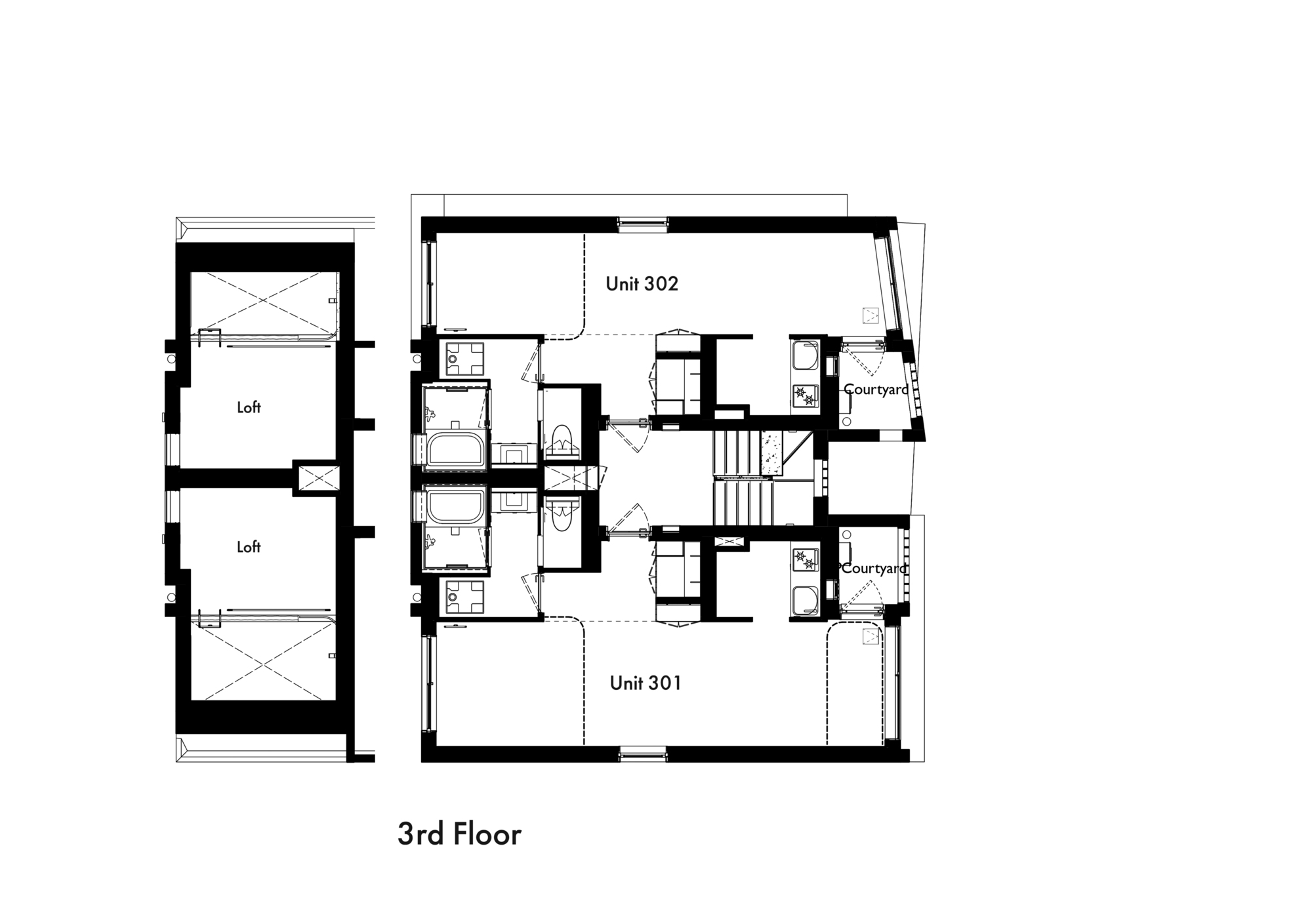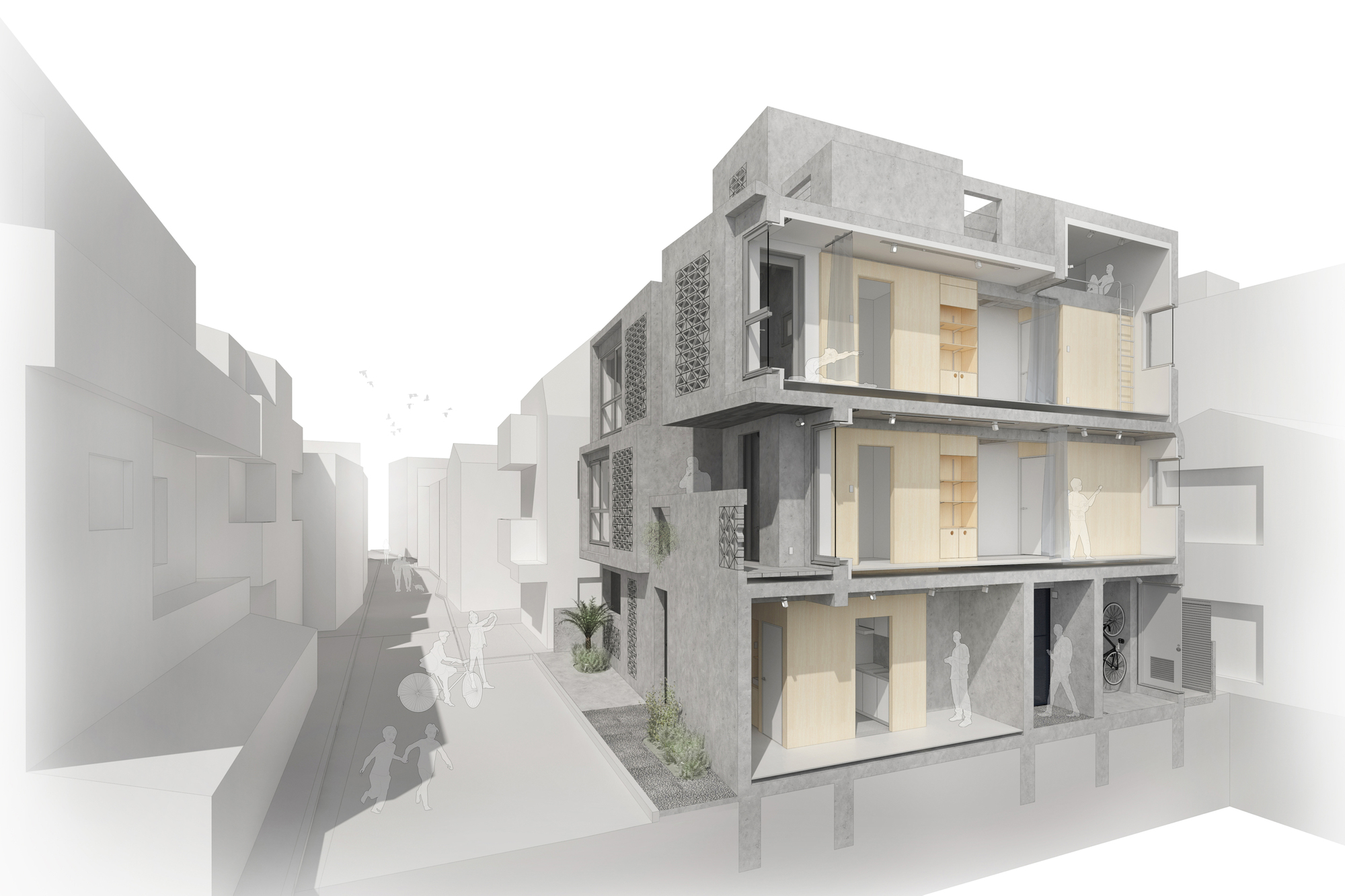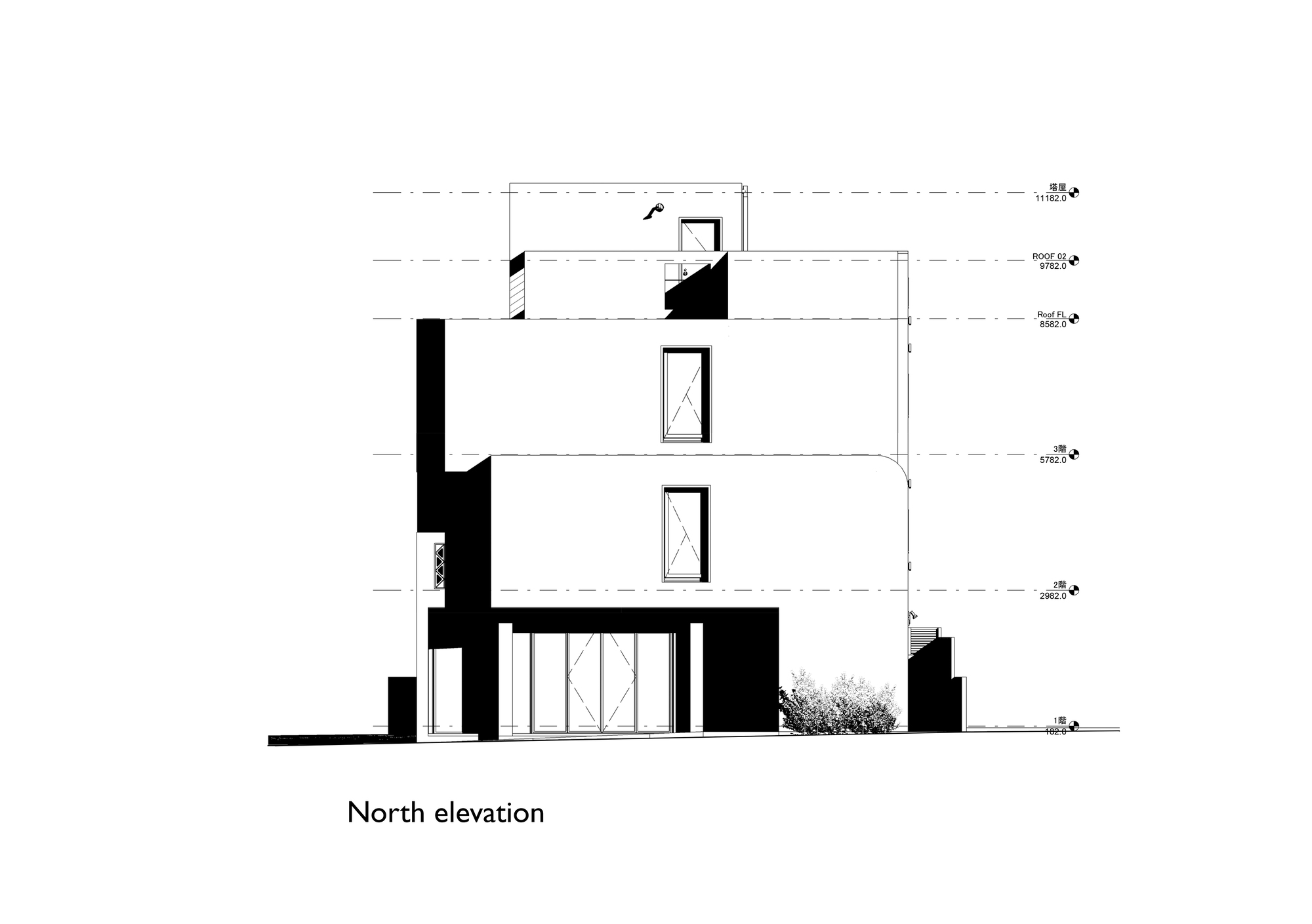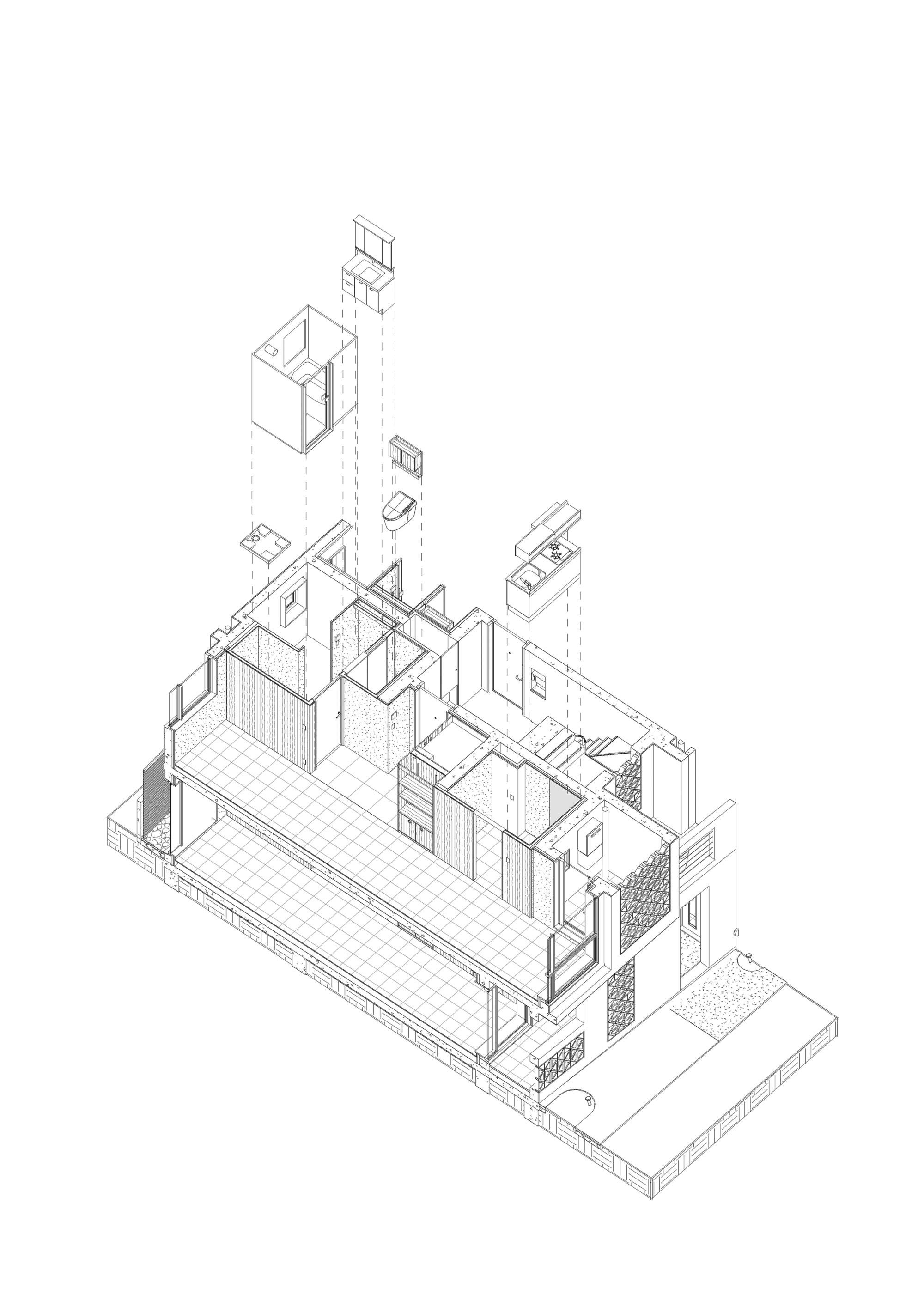A housing complex consisting of six units, planned for spring 2019 and completed in autumn 2021. Located in Shitamachi Tokyo, it is in the heart of a quiet residential area with a local shrine and shopping district, as well as many long-term residents. This housing project aims to provide a space for “Life and Work” that can accommodate one or two people, couples, siblings, or friends, as well as those who need a home and office, and who need a place to live and work.
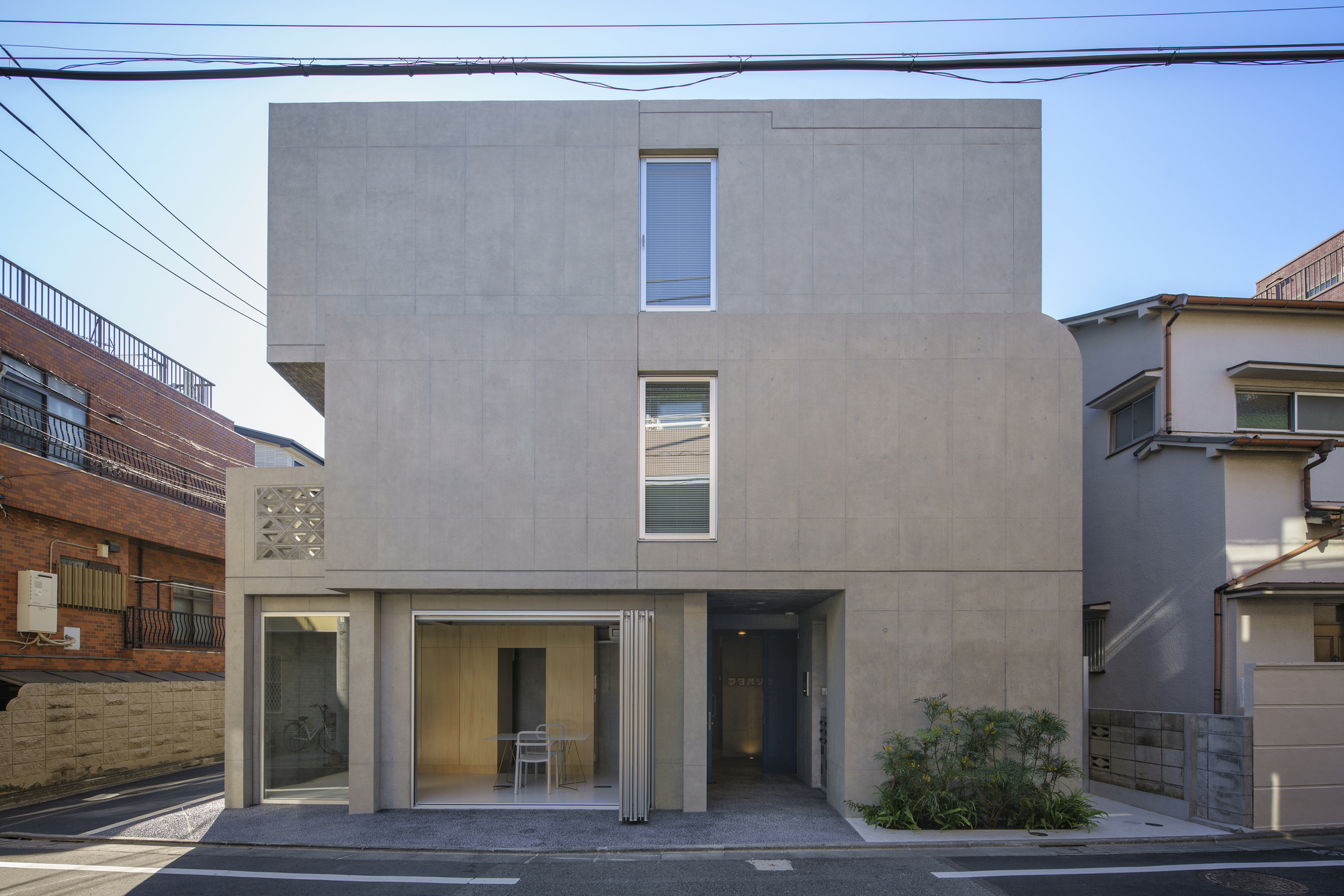

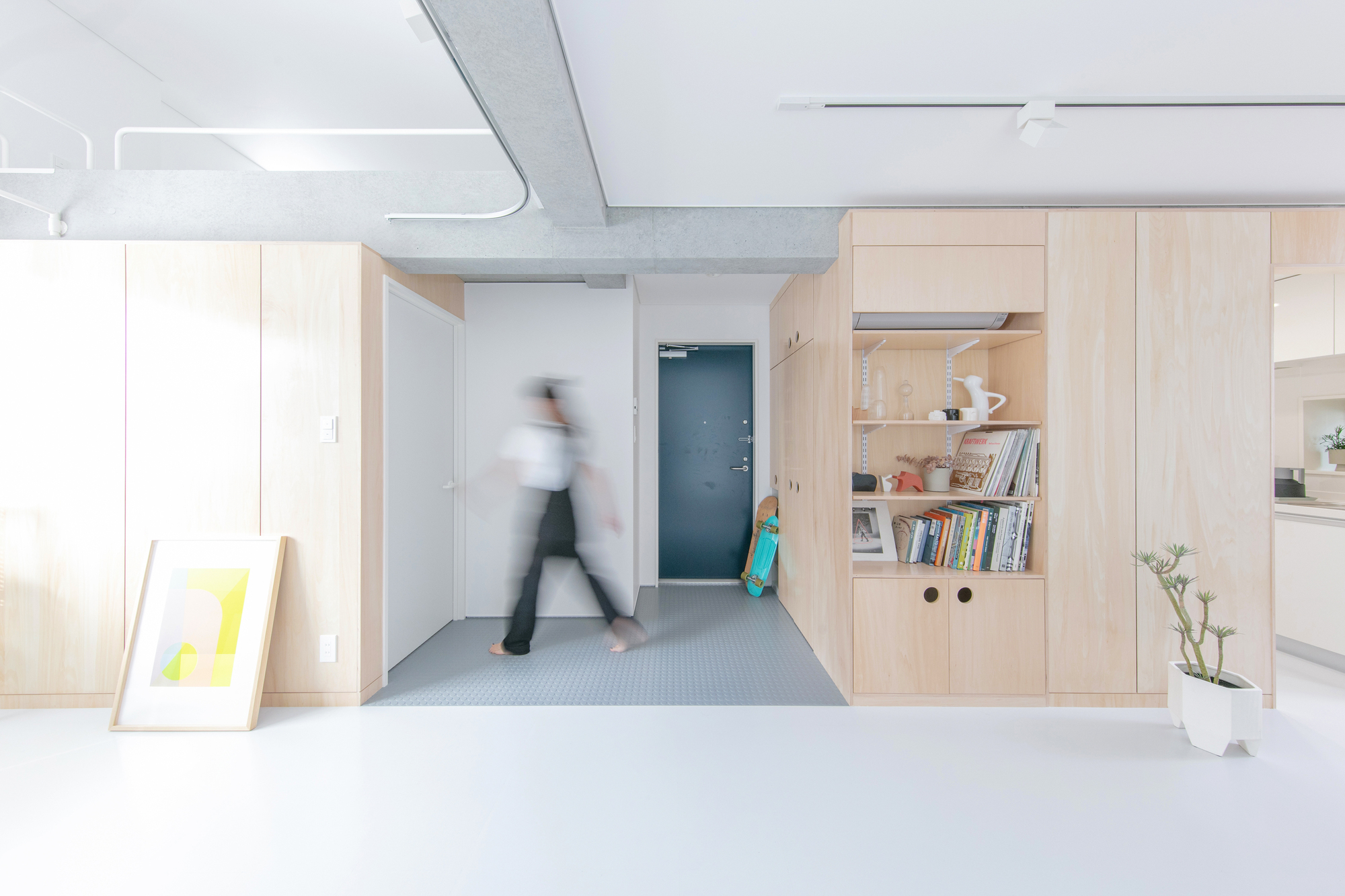
We created this space by considering what a comfortable space means for the residents, and at the same time, how this space could complement the local area. In recent years, the design of many apartment complexes has limited the choices of residents’ expression and lifestyle. Our aim was to create a flexible space where residents would be able to create a base for various activities that went beyond simply a place to return to after work to sleep.
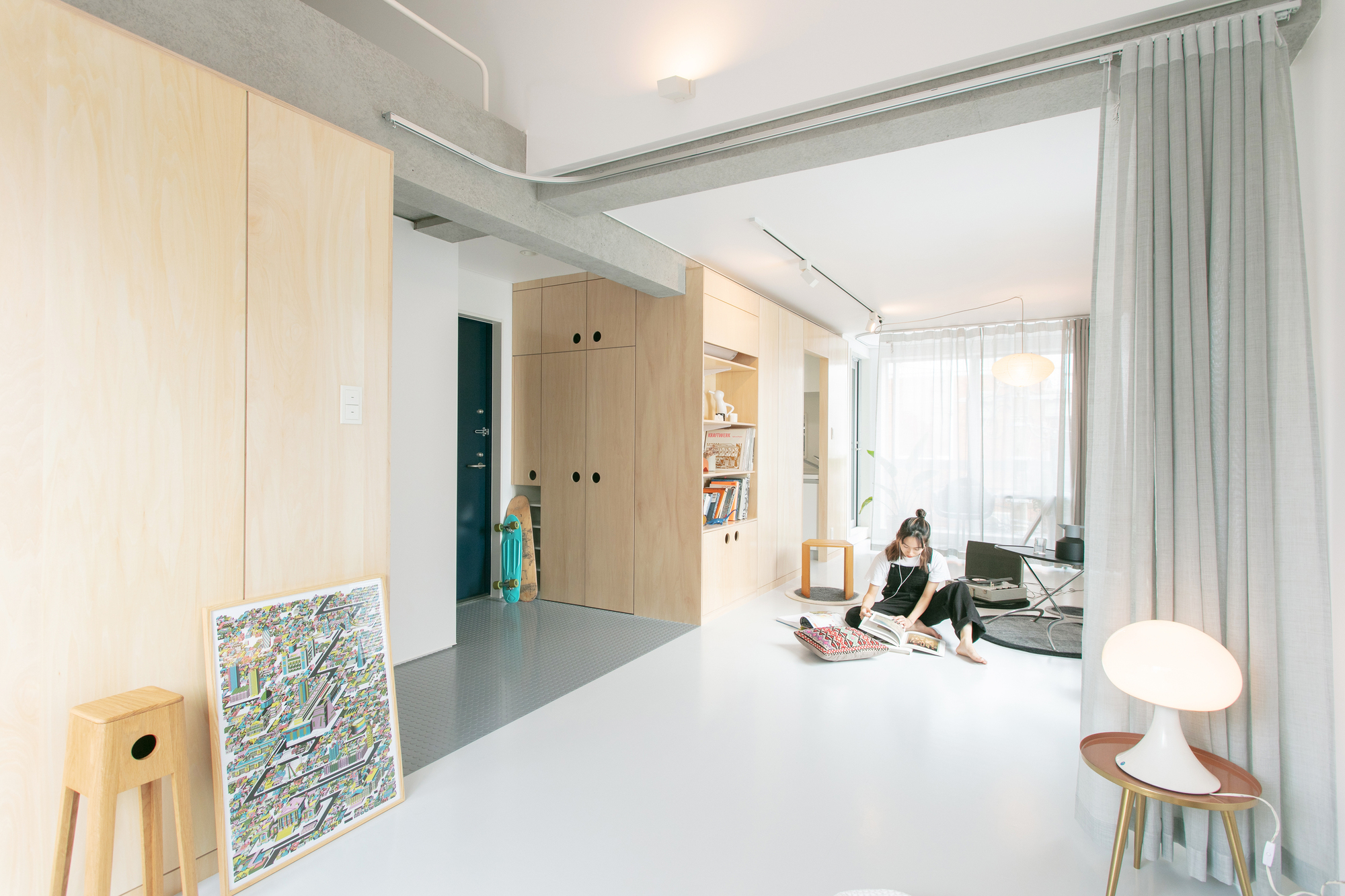
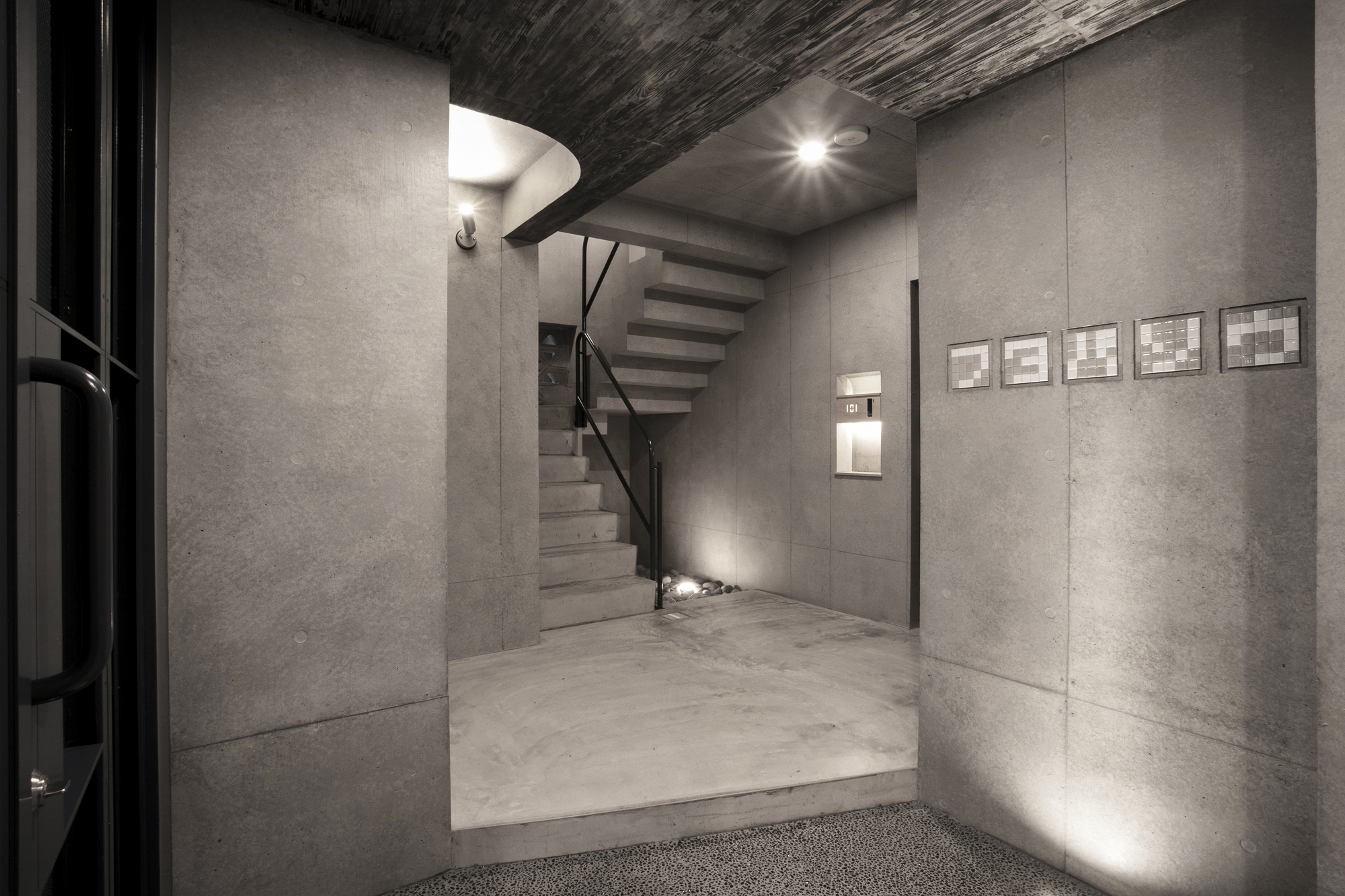
The volume of Futabasou is arranged in such a way that it resembles a pile of clay or soft yokan slices, one on top of the other, in order to eliminate the brutal-looking concrete and to harmonize with the neighboring houses and the surrounding area. While the materials and textures of the entire exterior are consistent, each unit has an individual character that functions independently rather than forming a single mass. Each ‘slice’ as a single unit is constructed to serve as a single building block and as a single structure. The space between each unit creates the main circulation area that leads to courtyards and terraces, a staircase, and to the common area, creating a three-dimensional pathway into the building. The aim is that by changing the perception of each unit to a ‘home’ rather than a ‘room’, people will form a stronger attachment to the space.


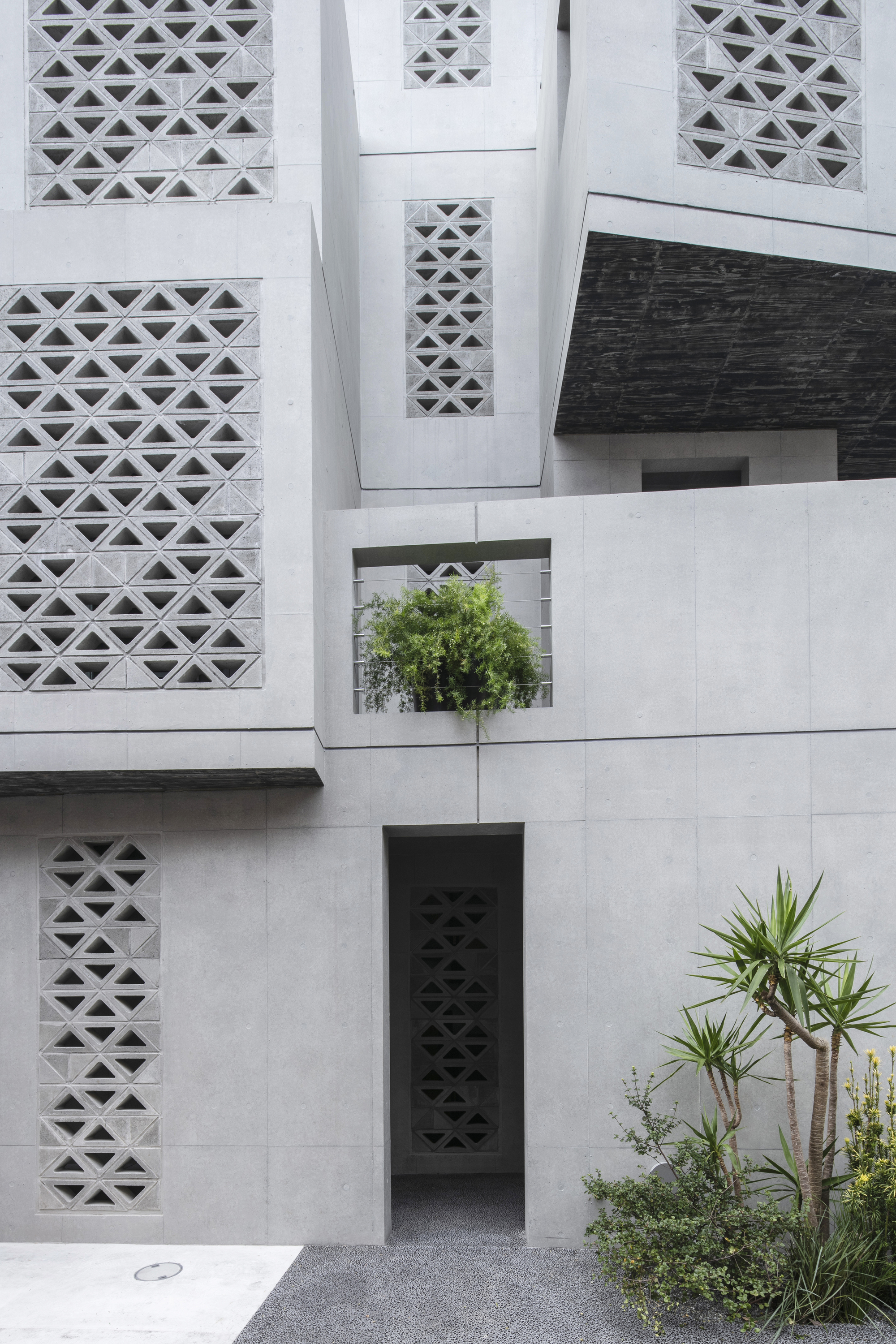
In the Shitamachi areas, there is a tradition of cherishing small alleys. Neighbors exchange greetings as they pass each other, and people passing by are entertained by small gardens that resemble the “nokisaki” of individual homes. In FUTABASOU, by connecting with the adjoining alleys, our intention is to continue the traditions of the alleys cherished by the residents of the neighborhood and to create an expression of the alleys that continues through the building from the exterior to the living room.
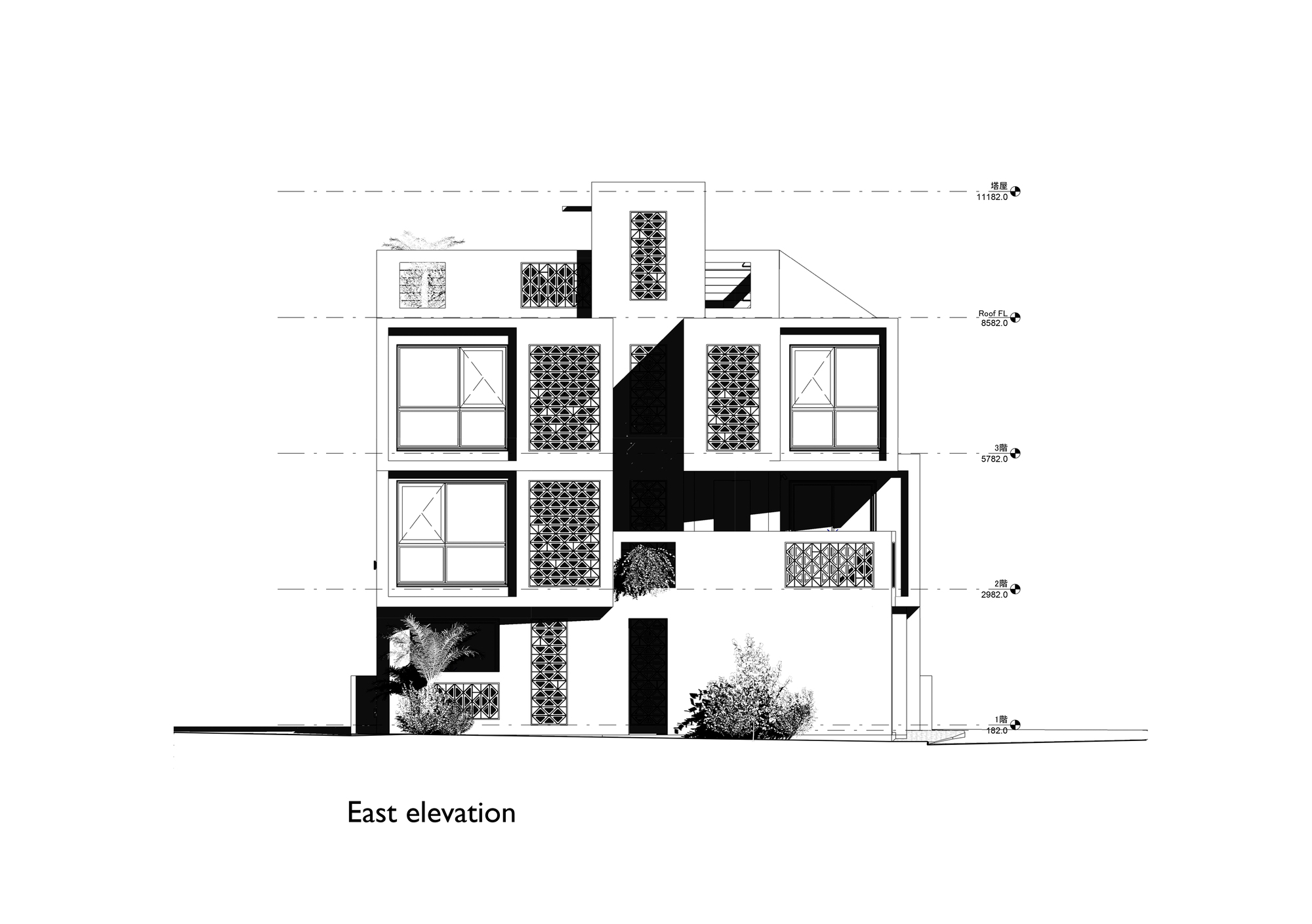
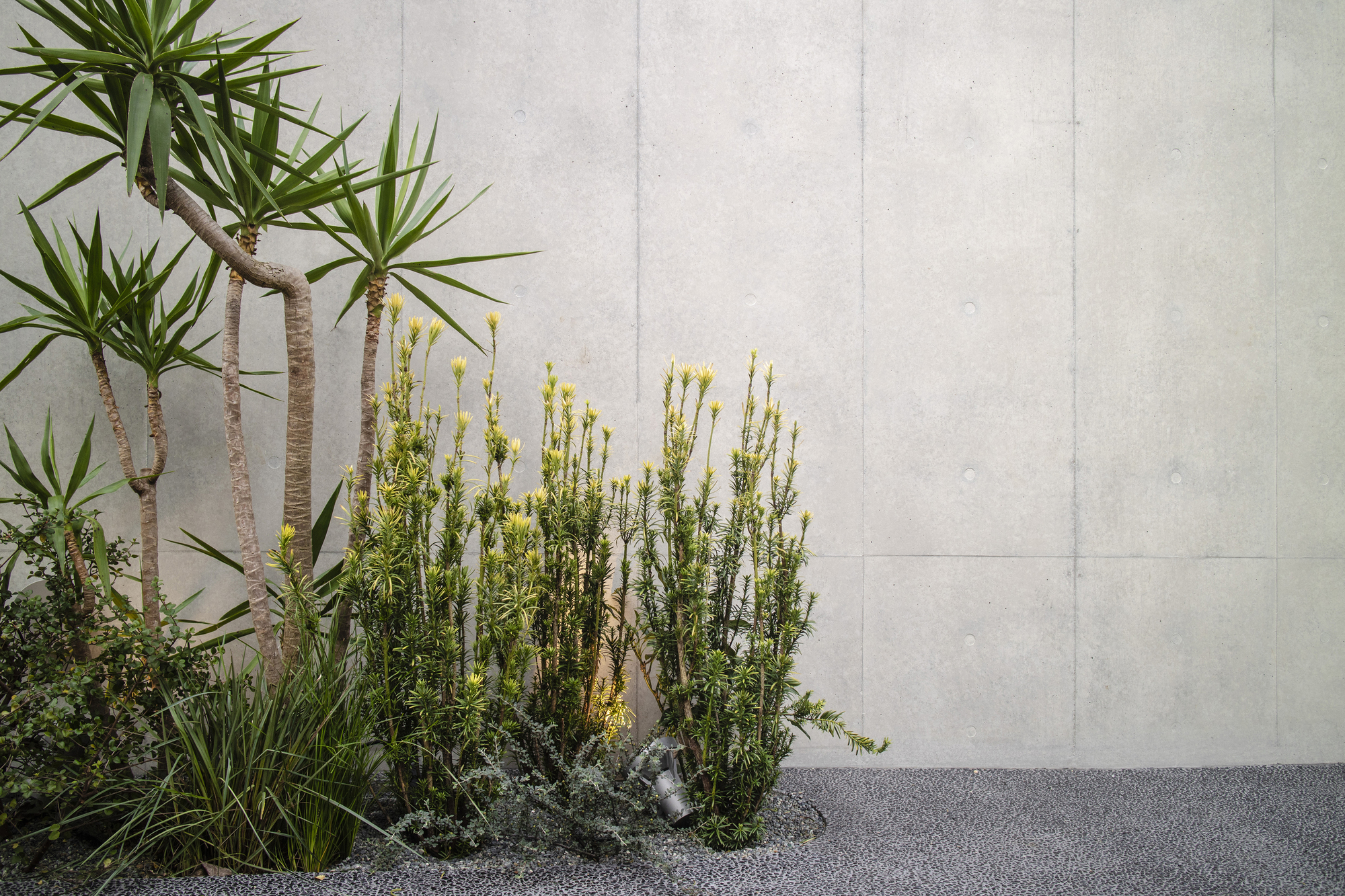
In order to create a space that is open to the alley, breeze blocks with a motif of traditional Japanese bamboo weaving patterns have been used on the exterior walls of the stairs and courtyard, creating an airy alley while preserving the privacy of the residents. These blocks allow light to pour in and out. During the day, the blocks admit light into the building, and after dusk, the building itself illuminates the alley like a traditional stone lantern.
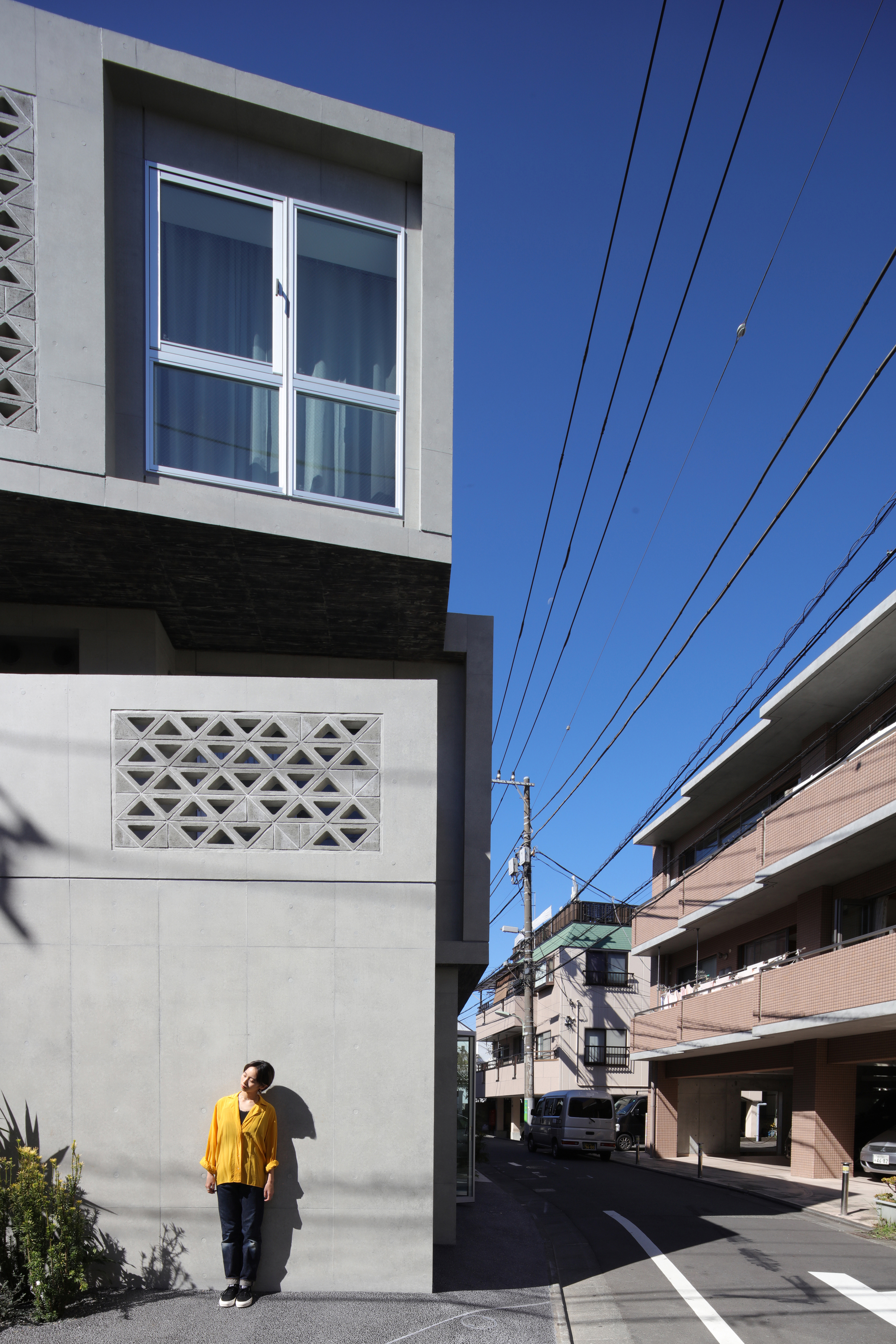

At the entrance to each apartment, a display shelf is provided as a space where residents can express their individuality, much like the “nokisaki” of individual houses in the neighborhood that are often used as a place to express residents’ identity. The interior of the dwelling is a single large space that can be partitioned with curtains into “living room”, “bedroom”, “Hiroen”, and “work room” according to the residents’ purposes. A courtyard or terrace with windows allows for air and light to circulate through all areas of the space including the kitchen and bathroom.
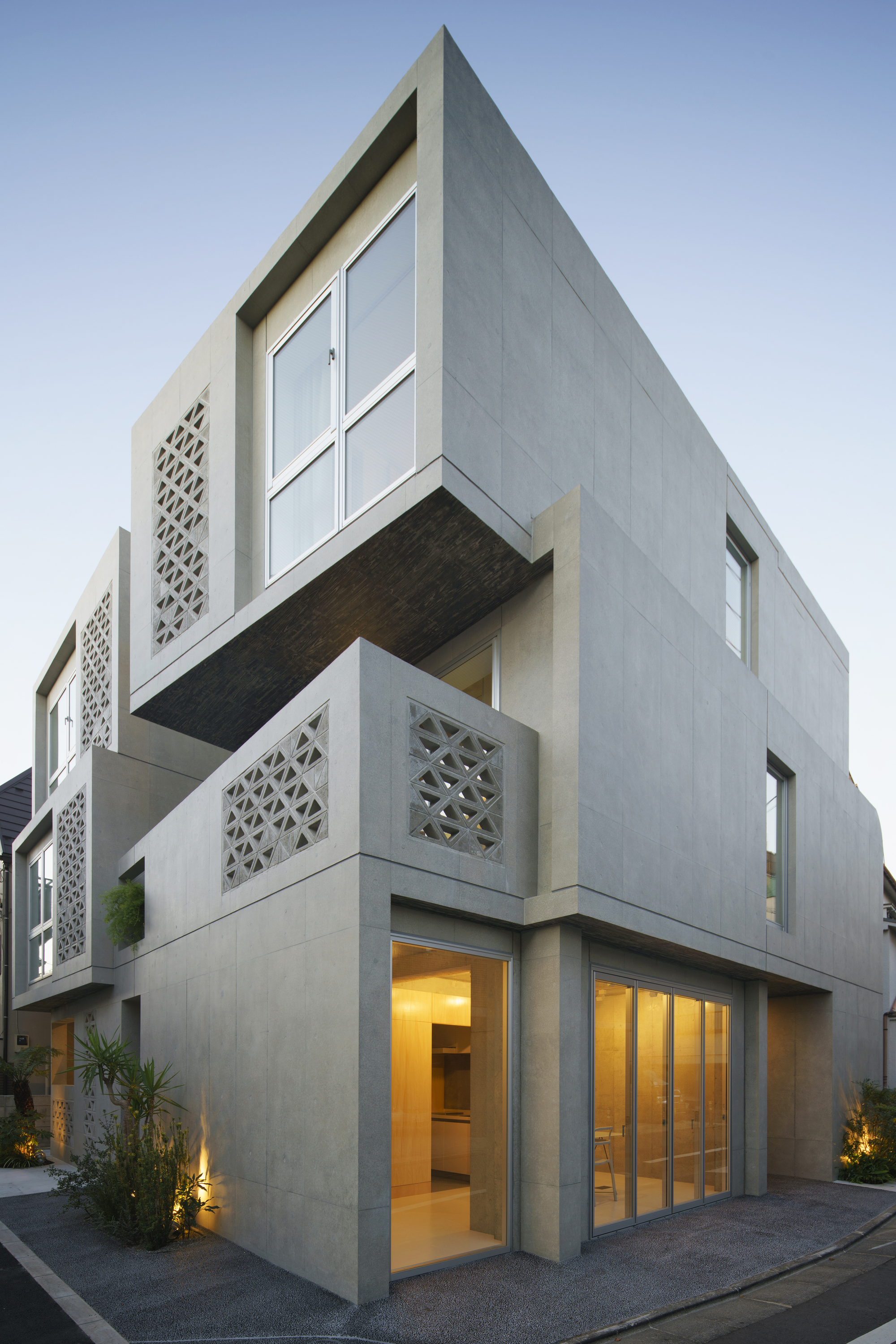
1 Yokan is a Japanese confection made of red bean paste, agar, and sugar. It is normally comes in a gelled block form, and eaten in slices.
2 Nokisaki is a term for a small space between a house and an adjacent alley.
▼项目更多图片

